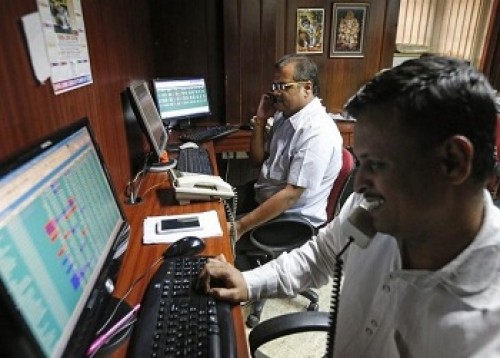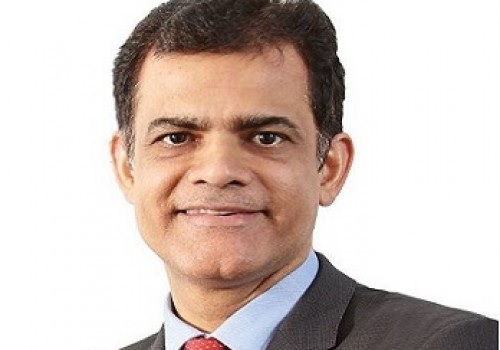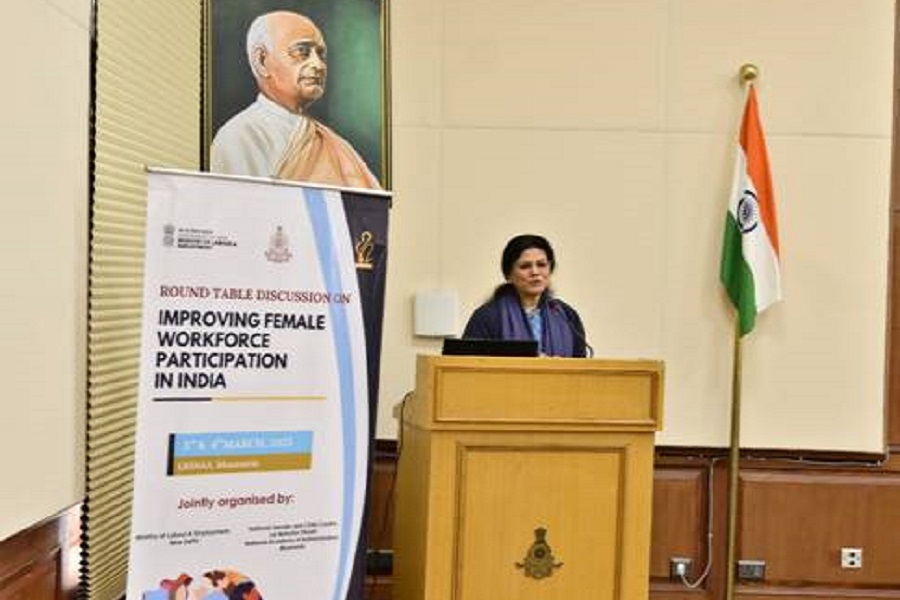Orkla India coming with an IPO to raise upto Rs 1667 crore

Orkla India
- Orkla India is coming out with a 100% book building; initial public offering (IPO) of 2,28,43,004 shares of Rs 1 each in a price band Rs 695-730 per equity share.
- Not more than 50% of the issue will be allocated to Qualified Institutional Buyers (QIBs), including 5% to the mutual funds. Further, not less than 15% of the issue will be available for the non-institutional bidders and the remaining 35% for the retail investors.
- The issue will open for subscription on October 29, 2025 and will close on October 31, 2025.
- The shares will be listed on BSE as well as NSE.
- The face value of the share is Rs 1 and is priced 695.00 times of its face value on the lower side and 730.00 times on the higher side.
- Book running lead managers to the issue are ICICI Securities, Citigroup Global Markets India, J.P. Morgan India and Kotak Mahindra Capital Company.
- Compliance Officer for the issue is Kaushik Seshadri.
Profile of the company
Orkla India is a multi-category Indian food company with operations spanning several decades, offering a diverse range of products that cater to every meal occasion, from breakfast and lunch to dinner, snacks and beverages and desserts. In Fiscal 2024, it was one of the top four companies in terms of revenue from operations among select leading spices and convenience food peers. The company’s products, under its brands MTR and Eastern, are crafted with authenticity and tradition, and are deeply rooted in the South Indian culinary heritage. The key product categories it offers are Spices (comprising blended and pure spices), and Convenience Foods (comprising ready-to-cook (RTC), ready-to-eat (RTE) foods and Vermicelli, among others).
In Spices, its key products include: (a) Sambar Masala, Chicken Masala, Puliogare Masala, Rasam Masala and Meat Masala, among others, in blended spices; and (b) Chilli, Kashmiri Chilli, Turmeric, Coriander and Cumin, among others, in pure spices. Its Convenience Foods products simplify the cooking process and enable quick meal preparation through products such as Gulab Jamun mix, Rava Idli mix, 3-Minute Poha and Dosa mix. Its portfolio comprises approximately 400 products across these categories, as of June 30, 2025, and it sold around 2.3 million units on average every day as of June 30, 2025.
The company through its brands, MTR and Eastern, has a deep understanding of local flavours and a strong commitment to quality that has resulted in the current scale, particularly in the core markets of Karnataka, Kerala, Andhra Pradesh and Telangana. Its multi-category product portfolio is manufactured across its owned manufacturing facilities in India as well as contract manufacturing facilities in India and in the UAE, Thailand and Malaysia. The manufacturing facilities in India are in proximity to key raw material sourcing areas, ensuring reduced lead times and inbound transportation costs. The location of its manufacturing facilities, combined with its extensive distribution network, facilitates efficient consumer reach in its core markets, driving overall supply chain efficiency.
Proceed is being used for:
- Carrying out the Offer for Sale of Equity Shares of face value of Rs 1 each by the Selling Shareholders
- Achieving the benefits of listing the Equity Shares on the Stock Exchanges
Industry Overview
The Indian packaged food market was estimated at Rs 10,180 billion in Fiscal 2024, reflecting a CAGR of 10.8% vs Fiscal 2019. The high growth is driven by rising disposable incomes, urbanisation, lifestyle changes, nuclearisation, and a growing workforce, particularly among women. The packaged food market remains stable throughout the year, as demand is primarily driven by regular consumption rather than seasonal fluctuations. Packaged food in India, a growing opportunity indicated by rising per capita spend Annual per capita spend on all categories of packaged food was Rs 7,000 in India in Fiscal 2024. In Fiscal 2020, this was Rs 4,650, which was significantly lower than China at Rs 16,000 and the USA at Rs 1,12,500, indicating substantial growth potential for the packaged food industry as the Indian market matures. India’s packaged food market entered a high-growth phase between Fiscal 2019-24, mirroring China’s high growth trajectory.
India, often referred to as the 'Land of Spices', is the world's largest producer, consumer, and exporter of spices. It contributes nearly 70% of global spice production by volume and accounts for approximately 43% of global spice exports by value as of Fiscal 2024. With diverse agro-climatic conditions and strong domestic and international demand, the country cultivates approximately 75 of the 109 spice varieties listed by the International Organization for Standardization (ISO). These include, but are not limited to, chilli, turmeric, coriander, black pepper, cardamom, and cumin. In addition, India exports spices to over 180 countries. States such as Karnataka, Rajasthan, Andhra Pradesh, Telangana, Madhya Pradesh and Gujarat are key contributors with approximately 80% of India’s total spice production by volume in Fiscal 2024.
The Indian spices market has grown at a 11.5% CAGR approximately to Rs 1,230 billion in Fiscal 2024 vs Fiscal 2019 and is expected to grow to Rs 2,080 billion in Fiscal 2029. The projected high growth rate of the spices market can be attributed to various growth drivers, including increasing population, rising disposable income, increasing urbanisation, rapidly growing e-commerce/quick-commerce platforms, need for convenience and the growing trend of spices being used for their medicinal properties and as functional foods. The packaged spices market constitutes a 40% share of the domestic spices market and was valued at Rs 345 billion in Fiscal 2024. This market has grown at a CAGR of approximately 13.3% since Fiscal 2019 and is projected to reach Rs 615 billion by Fiscal 2029, representing a 45% share. The slightly lower growth rate of 12.3% between Fiscal 2024 and Fiscal 2029 can be attributed to the current deflationary trend in the pure spices segment, and negligible price growth in the blended spices category. The shift towards the packaged market is influenced by factors on both the demand and supply sides.
Pros and strengths
Category market leader with the ability to build and scale household food brands: Leading brands have built significant market shares in packaged spices market of South India, highlighting its strong brand equity. The spice blends offered under the MTR brand are designed for vegetarian cuisine, while Eastern’s blends are crafted predominantly for non-vegetarian cuisines. Its market position is further built on its deep understanding of local tastes and products tailored to suit regional preferences. Its product portfolio caters to local tastes by offering a range of local dishes within its core markets. The company through its brands, MTR and Eastern, has a deep understanding of local flavours and a strong commitment to quality that has resulted in the current scale, particularly in the core markets of Karnataka, Kerala, Andhra Pradesh and Telangana.
Multi-category food company with a focus on product innovation: It continuously innovates around its offerings to meet evolving customer needs. It does this through a combination of enhancing recipes, creating different product formats, and implementing novel preparation methods, among other approaches. For instance, the company launched (a) MTR Minute Fresh batters, as a more convenient addition to its existing range of Dry Mixes; (b) Ready-to-Eat range of sweets as an extension of its existing range of Sweet Mixes; and (c) 3-Minute Breakfast range as an expansion of convenience offerings to its existing breakfast range. The company has also ventured into new cuisine spaces such as Pan-Asian cuisine, with a range of blended spices and cooking pastes under its new brand “Wok N Roll” which was launched in January 2025.
Extensive distribution infrastructure with deep regional network and wide global reach: The company has an extensive Pan-India distribution network with 834 distributors and 1,888 sub-distributors across 28 states and six union territories, 42 modern trade partners and six e-commerce and quick commerce partners. The company’s brands, MTR and Eastern, are the most widely distributed brands in Karnataka and Kerala for spices. Out of the universe of around 300,000 retail outlets selling blended spices in Karnataka and around 74,500 in Kerala, its brands have a presence in 67.5% and 70.4% of the outlets, respectively versus an industry average of 30-40%. In combination with significant marketing investments over the years and extensive distribution, MTR and Eastern have reached nine out of 10 households through at least one of its products in Karnataka and Kerala respectively (for January 2024-December 2024, based on the share of households consuming at least one of its products at least once a year).
Efficient, large-scale manufacturing with stringent quality control and a robust supply chain: It manufactures its multi-category products in modern and flexible manufacturing facilities, powered by a robust supply chain across sourcing and distribution. As of June 30, 2025, it operated nine manufacturing units in India, with a total installed capacity of 182,270 TPA. The company has continually upgraded its manufacturing capabilities over the years to improve efficiency, productivity, quality and safety. Its key manufacturing facilities in Bommasandra, Bengaluru, are largely automated, from the process of receiving materials to conveying, supervisory control and data acquisition-enabled processing, and primary and secondary packaging. It has also implemented Internet of Things (IoT) enabled manufacturing in its key facilities in Bommasandra, Bengaluru, integrating IoT sensors with critical machinery and enabling online tracking of production data.
Risks and concerns
Dependent on few suppliers for raw materials: The company is dependent on its top ten suppliers which contributed to 37.9% in the three months ended June 30, 2025 and 33.7% of total purchases in Fiscal 2025 for raw materials. Any loss of suppliers or interruptions in the timely delivery of supplies could have an adverse impact on its business, financial condition, cash flows and results of operations.
Significant revenue comes from outside India: The company derived a portion of its revenue from sale of products to customers outside India (20.4% and 20.6% in the three months ended June 30, 2025 and in Fiscal 2025). Its inability to effectively manage its exports or comply with regulations in countries to which it exports, may adversely affect its business, financial condition, cash flows and results of operations.
Geographical constrain: The sale of its products is concentrated in South India contributing to 70.0% and 70.2% of its revenue from sale of products in the three months ended June 30, 2025 and in Fiscal 2025, respectively. Additionally, eight of its nine owned manufacturing facilities and 15 of its 18 contract manufacturing facilities in India are located in South India, as of June 30, 2025. As a result, it may be adversely affected by unfavourable events affecting this region.
Huge working capital requirement: Its operations require a significant amount of working capital, including to finance the purchase of raw materials, maintenance of adequate levels of inventory and execution of manufacturing processes. Any inability to source the required amount of working capital for addressing any production needs, may lead to under-production, decreased revenues and a dissatisfied customer base. Further, any delay in processing of payments by its customers may increase its working capital requirement. In the event a customer defaults in making payments for an order on which it has devoted significant resources, it could affect its profitability and liquidity and decrease the capital reserves that are otherwise available.
Outlook
Orkla India is an Indian food company, offering a diverse range of food products, from breakfast to lunch and dinner, snacks, beverages, and desserts. It has a collection of iconic Indian heritage brands - MTR Foods, Eastern Condiments, and Rasoi Magic. The company has extensive distribution infrastructure with deep regional network and wide global reach. It also has Large-scale manufacturing with stringent quality control and a robust supply chain. On the concern side, the company derived a portion of its revenue from sale of products to customers outside India. Its inability to effectively manage its exports or comply with regulations in countries to which it exports, may adversely affect its business, financial condition, cash flows and results of operations. Moreover, the company is dependent on its top suppliers for raw materials and any loss of suppliers or interruptions in the timely delivery of supplies could have an adverse impact on its business, financial condition, cash flows and results of operations.
The issue has been offering 2,28,43,004 shares in a price band of Rs 695-730 per equity share. The aggregate size of the offer is around Rs 1587.59 crore to Rs 1667.54 crore based on lower and upper price band respectively. Minimum application is to be made for 20 shares and in multiples thereon, thereafter. On performance front, the company’s total revenue from operations increased by 1.60% to Rs 23,947.10 million in Fiscal 2025 from Rs 23,560.10 million in Fiscal 2024. Moreover, the company’s restated profit for the year increased by 13.0% to Rs 2,556.9 million in Fiscal 2025 compared to Rs 2,263.3 million in Fiscal 2024.
The company determined to drive growth in its core markets of Karnataka, Kerala, Andhra Pradesh and Telangana by leveraging favourable market conditions, which include the shift towards packaged products, the importance of regional and authentic flavours, and consumers’ focus on health and convenience. Of the Indian domestic spices market, the packaged spices market constitutes a 40% share, valued at Rs 345 billion as of Fiscal 2024. This market has grown at a CAGR of approximately 13.3% since Fiscal 2019 and is projected to reach Rs 615 billion by Fiscal 2029, representing a 45% share. It also intends to grow revenues and solidify its leadership by increasing household penetration and purchasing frequency, in doing so capturing market share from the domestic unorganised sector.
























